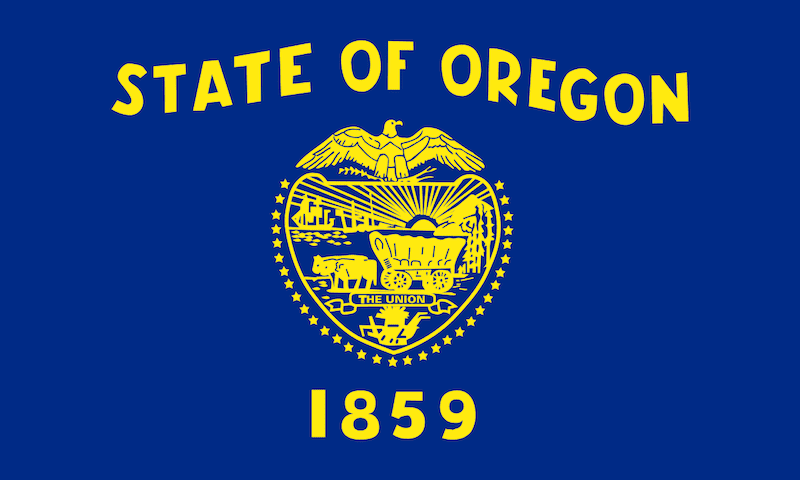Discussing Proven Methods and Occasional Madness in Forecasting State Tax Revenues

America’s Wounded Veterans Need and Want Medical Cannabis; It is Time the Federal Government Provides It
March 24, 2018
Despite Original Design, Pennsylvania Growers Lack in Diversity
March 24, 2018By Beau Whitney, Senior Economist
& J.J. McCoy, Senior Managing Editor for New Frontier Data
What We Have Learned: Forecasting tax revenue entails more than simply taking the tax receipts from previous months, annualizing sales, and then projecting the numbers forward.
July 16, 2017 — Recently, New Frontier Data’s Senior Economist Beau Whitney was invited by the Oregon Office of Economic Analysis to attend a cannabis tax forecasting meeting in the state capital of Salem. Though he has previously participated in the Oregon Governor’s Council of Economic Advisors meetings, it has been only recently that Oregon’s cannabis tax became a topic for examination.
According to the Oregon State Department of Revenue, through the first 12 months of taxing the state’s adult use program, Oregon generated over $65.4 million in revenue. Given those numbers, state lawmakers decided to take a closer look at how to forecast tax revenues.
Forecasting tax revenue entails more than simply taking the tax receipts from previous months, annualizing sales, and then projecting the numbers forward.
For example, Oregon’s revenues are derived from a combination of retailers, and two different tax rates. Adult use purchases made from a medical dispensary are taxed at 25%, while they are taxed at 17% from an adult use vendor. The variation lends difficulty to defining what the true sales are in Oregon, thereby complicating the exercise in forecasting future sales. Some of the challenges with estimating tax revenues include forecasting the rate at which demand will grow, determining at which point the market will reach saturation, and divining the impact of falling prices on tax revenues versus the upper bounds of demand, etc.
Even as one of the nation’s most mature markets, Colorado regularly struggles with modeling the state’s forecast for cannabis taxes; their state economists are still trying to perfect a robust forecasting model, relying in the near term on a somewhat more quixotic forecasting process due to the lack of a predetermined baseline. Since a forecast is typically based on prior results — be they by the month, budget quarter, etc., — the lack of given knowns and the respective regulatory differences between jurisdictions (Oregon versus Colorado, opposed to Washington, etc.) lend significant challenges to determining reliable and fundamental assumptions. And as with captaining a ship without any map, being off even a little bit as one leaves the harbor can find you arriving at an entirely unintended destination.
Accurately forecasting the initial ramp-up of either medical or adult use demand is extremely difficult (see: Nevada). Initial demand during the first few months of sales in Colorado were roughly half of that forecasted in the state’s original assumptions. The assumptions had to be tweaked (downward) once the initial tax revenues started coming in from sales. The issue in Colorado was that lawmakers overestimated how much of a premium that consumers proved willing to pay (plus taxes) in a legalized program rather than the established illicit market.
Conversely, Oregon proved the opposite: That state significantly underestimated initial sales and tax revenues. The highest estimate for tax revenues from the first year of adult use sales was $38.5 million, which turned out to be 59% of that actually collected. Oregon’s economists had not anticipated just how enthusiastically consumers would embrace the legalized adult use cannabis, their enthusiasm due in part to the state’s comparatively low tax rate. Ever since, the state’s estimates have accordingly been adjusted upward.
“When I presented my forecast of projected sales and subsequent tax revenues in Oregon,” Whitney recalled, “lots of state agencies were represented, but I was the only industry representative. This is another issue which states have to contend with: the relative lack of industry knowledge that they could draw from in order to understand the evolving demand in their state’s markets.”
He explained that anticipating the impact of issues and variables including any seasonality of demand, the influence of tax rates on demand (and subsequent tax revenues), potential policies issues that could shock the market and impact demand could be more elegantly delivered if the state had more input from industry stakeholders.
“This is where big data can perform a vital role in the industry,” Whitney added. “New Frontier Data’s rigorously developed forecast methodology, coupled with our continuous expansion of the data sets informing our market growth projections, enable us to define customer behavior, bifurcate expectations between flower and derivative (oil/edible) markets, follow pricing changes, estimate spends, and really refine the demand-forecasting environment. Having this data available to both states and businesses will help forecast future demand. This will in turn, help states dial in the tax revenues projections.”
Whitney concluded that “the future is bright for the industry, but as the industry grows the states will still be playing catch-up in predicting demand and forecasting revenues. These challenges will remain for the foreseeable future.”

Beau Whitney
Beau Whitney is the Senior Economist for New Frontier Data. Whitney has a unique blend of high tech business operations skills, economics and pollical analysis, as well as cannabis industry experiences.
While at Intel and TriQuint Semiconductor, Whitney honed his business operations skills associated with quickly ramping products from low volume to high volume. This is a skill he has since transferred to the cannabis industry. He is the former chief operations officer and compliance officer of one of the largest vertically integrated, publicly traded cannabis company in North America. His experiences incorporated growing, extraction, edible manufacturing and wholesale and retail distribution operations.
As an economic and policy analyst, his Whitney Economics white papers analyzing the cannabis market have been referenced in Forbes Magazine, USA Today, as well as in cannabis industry publications and across the Associated Press wire. Whitney has provided policy recommendations at the state and national levels and is considered an authority on cannabis economics.

J.J. McCoy
J.J. McCoy is Senior Managing Editor for New Frontier Data. A former staff writer for The Washington Post, he is a career journalist having covered emerging technologies among industries including aviation, satellites, transportation, law enforcement, the Smart Grid and professional sports. He has reported from the White House, the U.S. Senate, three continents and counting.




